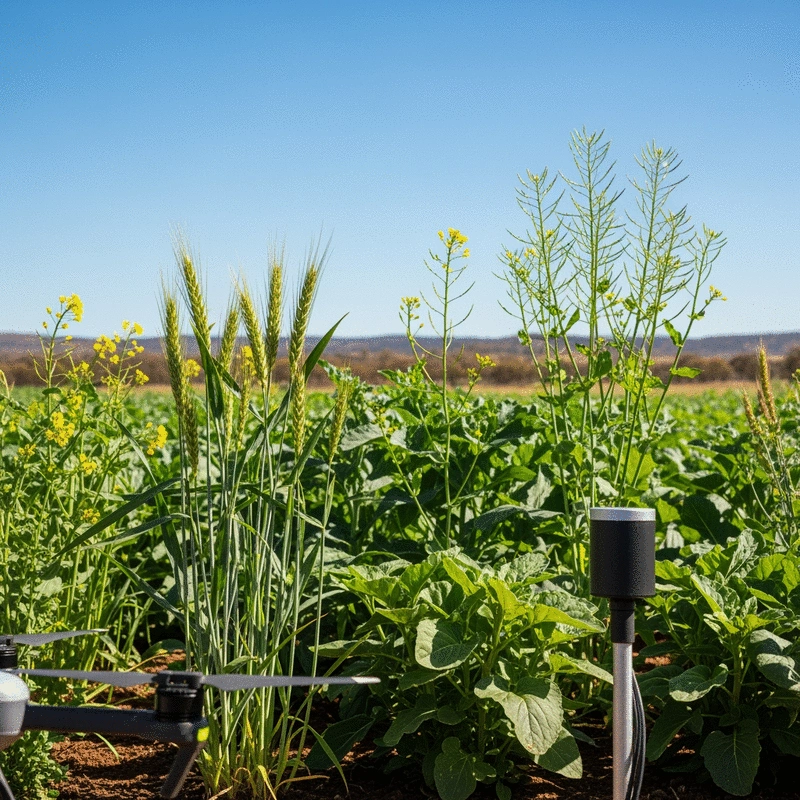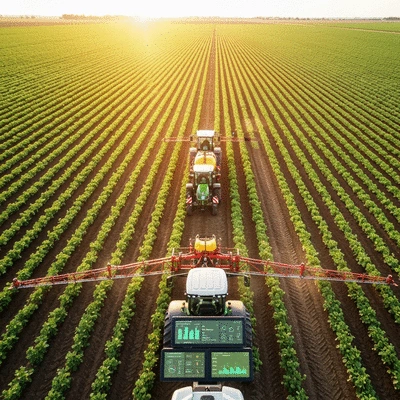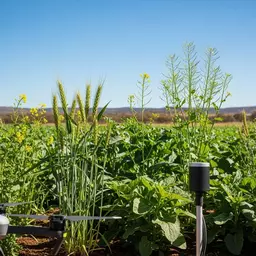Genetic Tools & Their Role
- ✓Improving crop traits (e.g., drought tolerance, nutrition)
- ✓Enhancing disease resistance in crops/livestock
- ✓Facilitating faster breeding processes
- ✓Supporting genetic diversity conservation
As the agricultural landscape in Australia evolves, the role of genetic innovation tools becomes increasingly vital. What does this mean for farmers seeking sustainable practices? Let’s explore the groundbreaking advancements that shape the future of agriculture.
Genetic innovation tools are crucial for enhancing agricultural productivity and sustainability. The following visual highlights the various applications and benefits of these tools across different aspects of farming.
In today’s rapidly evolving agricultural landscape, genetic innovation tools play a pivotal role in enhancing productivity and sustainability. These tools encompass a range of biotechnological advancements that help us understand and manipulate the genetic makeup of plants and animals. By leveraging these innovations, farmers can improve crop yields, boost disease resistance, and adapt agricultural practices to changing climate conditions.
As I explore the landscape of genetic innovations, I often think about how these tools can empower farmers to make informed decisions that benefit both their yield and the environment. It’s fascinating to see how genetic tools can not only optimize agriculture but also contribute to a more sustainable framework for food production in Australia. For more on this, consider exploring genetic innovation in sustainable farming.
Genetic innovation tools include a variety of methods and technologies, such as genomics, CRISPR gene editing, and molecular markers. These tools are essential in modern agriculture for several reasons:
This innovation is crucial because it enables us to respond to the challenges posed by climate change and global food security. Through these tools, we can create resilient agricultural systems that not only sustain productivity but also protect our ecosystems.
Australia's unique climatic conditions make agricultural resilience a top priority. As my colleagues and I at Plant Frontier Insights often discuss, resilience in agriculture means the ability to adapt to environmental stresses while maintaining food production. This adaptability is essential for ensuring that our food systems can withstand shocks such as droughts, floods, and pest invasions.
Some key factors contributing to agricultural resilience include:
By focusing on these factors, we can enhance the robustness of our agricultural systems, ensuring they remain productive and sustainable for future generations.
Bioinformatics combines biology with information technology, playing a critical role in genetic innovations. By analyzing complex biological data, bioinformatics helps researchers identify genetic markers associated with desirable traits. This technology streamlines breeding programs, allowing for more effective selection of traits that enhance resilience and productivity.
For instance, bioinformatics tools can:
As we advance in using bioinformatics, the potential to revolutionize agricultural practices becomes even more exciting. It’s a testament to how science and technology can work hand-in-hand to create a sustainable future for Australian agriculture. You can learn more about specific applications like CRISPR in Australian crop breeding.
As we explore the transformative potential of genetic innovation tools, it's important to gather insights from the community. What challenges do you face in adopting these technologies on your farm? Share your thoughts below:
As we delve into the world of genetic innovation tools, it's crucial to consider their cost-effectiveness, especially for our small and medium-sized farms here in Australia. These tools can significantly enhance agricultural resilience, but their accessibility and affordability are key factors that determine their adoption. Understanding the financial implications of these innovations helps farmers make informed choices that align with their operational goals.
In my conversations with farmers, I have often heard concerns about the initial investment required for adopting new technologies. However, I always emphasize that the long-term benefits often outweigh these upfront costs. By enhancing crop performance and pest resistance, genetic tools can lead to higher yields and lower losses due to disease or climate variability.
For small and medium-sized farms, accessing genetic innovation tools can seem daunting. Yet, there are various programs and initiatives aimed at bridging this gap. Here are some vital avenues through which farmers can gain access:
These resources help ensure that even the smallest farms can harness the power of genetic innovation, allowing them to remain competitive in an evolving agricultural landscape.
While the benefits of genetic tools are clear, navigating the regulatory landscape is essential. Farmers need to understand the legal framework governing the use of these technologies. Compliance with regulations not only assures safety but also fosters public trust in genetic innovations. Furthermore, ethical considerations play a significant role in shaping these regulations. Farmers often seek guidance on how to implement these tools responsibly.
In Australia, agricultural policy significantly influences the deployment of genetic innovation tools. Policies that promote research funding and facilitate access to technology can make a huge difference. Here are key aspects of agricultural policy to consider:
Engaging with these policies can empower farmers, guiding them toward the responsible use of genetic tools while enhancing agricultural resilience. As we navigate these challenges together, let’s remember that the future of our farms relies on our ability to adapt and innovate responsibly!
So, how can farmers engage with genetic innovation tools? It starts with understanding the options available and taking actionable steps to integrate these tools into their farming practices. The journey may seem complex, but with the right support, it can lead to remarkable transformations in productivity and sustainability.
Accessing genetic tools involves researching and understanding which technologies align with your specific farming needs. Here’s a roadmap to get started:
By following these steps, farmers can make informed decisions that benefit both their operations and the environment!
Consultation with industry experts can provide invaluable insights into the practical applications of genetic tools. Engaging with specialists allows farmers to:
It’s a fantastic way to build a network of support, fostering collaboration that ultimately leads to enhanced resilience in the agricultural sector. For more resources, you might want to look into plant science advances in Australia.
Incorporating farm management software can streamline the integration of genetic tools into your practices. This technology allows farmers to:
By leveraging these technologies, farmers can enhance efficiency while ensuring their practices align with sustainability goals—an essential factor in building a resilient agricultural future!
Genetic innovation tools are biotechnological advancements like genomics, CRISPR gene editing, and molecular markers used to understand and manipulate the genetic makeup of plants and animals. They aim to improve crop yields, enhance disease resistance, and adapt agricultural practices to environmental changes.
Australia's unique and often harsh climatic conditions make agricultural resilience crucial. It refers to the ability of agricultural systems to adapt to environmental stresses (such as droughts, floods, and pests) while maintaining food production, ensuring long-term food security and sustainability.
Bioinformatics combines biology with information technology to analyze complex biological data. It helps identify genetic markers associated with desirable traits, streamline breeding programs, predict plant performance in various environments, and facilitate genome sequencing for a deeper understanding of plant genetics.
Small and medium-sized farms can access genetic tools through various avenues, including government grants and subsidies, partnerships with local research institutions, and collaborative breeding programs. Consulting industry experts and providers can also offer tailored advice and resources.
Navigating the regulatory landscape is essential to ensure compliance and build public trust. Ethical considerations also play a significant role in shaping these regulations, requiring farmers to understand legal frameworks and implement these tools responsibly while prioritizing safety and sustainability.
Here is a quick recap of the important points discussed in the article:



 As the agricultural landscape in Australia evolves, the role of genetic innovation tools becomes inc
As the agricultural landscape in Australia evolves, the role of genetic innovation tools becomes inc
 As the agricultural landscape in Australia faces mounting challenges, understanding effective crop p
As the agricultural landscape in Australia faces mounting challenges, understanding effective crop p
 As Australia faces growing agricultural challenges, the significance of biosecurity cannot be overst
As Australia faces growing agricultural challenges, the significance of biosecurity cannot be overst
 As we delve into the intricate world of biosecurity, consider this: the health of Australia’s ecos
As we delve into the intricate world of biosecurity, consider this: the health of Australia’s ecos